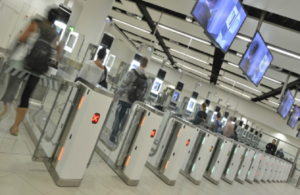Call for evidence: An inspection of ePassport Gates
News story
The Independent Chief Inspector invites anyone with knowledge and experience of the Home Office’s use of ePassport Gates to submit their evidence for his forthcoming inspection.

Launching the ‘call for evidence’, David Bolt said:
I am about to begin an inspection of the Home Office’s use of ePassport Gates and would like to invite anyone with relevant knowledge and experience to write to me with their evidence.
In recent years, the use by Border Force of ePassport Gates to manage arriving international passengers has increased. The Gates use technology to authenticate e-passports and to link the passenger to the travel document through a facial biometric comparison and have become a key component of Border Force’s strategy for managing the UK border efficiently and effectively.
My inspection will look at how well the ePassport Gates are working and where improvements are necessary. I am keen to hear from anyone who wishes to contribute to this inspection, but in particular from port operators, airlines, rail operators, passenger groups, education providers, NGOs and legal representatives detailing their experiences of:
- the ease of use of ePassport Gates, including signage, passenger assistance, queues, positioning, numbers in use, problems
- the impact of extending the use of ePassport Gates (in 2015) to 12-17 year olds
- the impact of extending the use of ePassport Gates (in 2019) to ‘B5JSSK’ nationals (Australia, Canada, Japan, New Zealand, Singapore, South Korea and the United States of America)
- the impact of ending the provision of passport endorsements on arrival in the UK, particularly for short-term students using the gates in error, or those required to evidence their immigration status, such as for a right to rent check
- the robustness of ePassport Gates in terms of their ability to detect attempts to circumvent the passport control
- the measures taken by Border Force to identify and protect vulnerable travellers using ePassport Gates, and the effectiveness of those measures
This inspection is still at the scoping stage, so I would be happy to receive suggestions of other areas that contributors feel should be included.
Please note that my remit does not extend to investigating individual cases. This remains a Home Office responsibility. However, I am keen to hear about individual cases, insofar as they serve to illustrate particular points, issues or trends.
How to respond
Please click here to email your submission to the Chief Inspector by 7th September 2020.
Please note:
In accordance with the General Data Protection Regulations (GDPR) we need your permission to process and retain the information you submit in your submission, by clicking here a consent statement will automatically be added to your email.
However if you are using a non-compatible email client then please send your submission to epassportgates@icibi.gov.uk with ‘ePassport Gates evidence submission’ in the subject line and include the following consent statement in the body of your email, ‘I consent to the Independent Chief Inspector of Borders and Immigration retaining and processing the information and data in this email.’
Please do not include this statement if you do not wish to give your consent. The information you submit may be quoted in the final inspection report, but it is the ICIBI’s practice not to name sources and to anonymise as much as possible any examples or case studies.
Published 10 August 2020